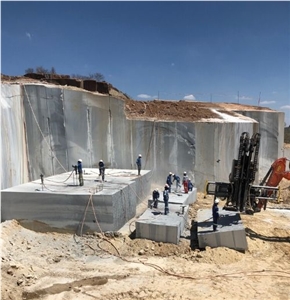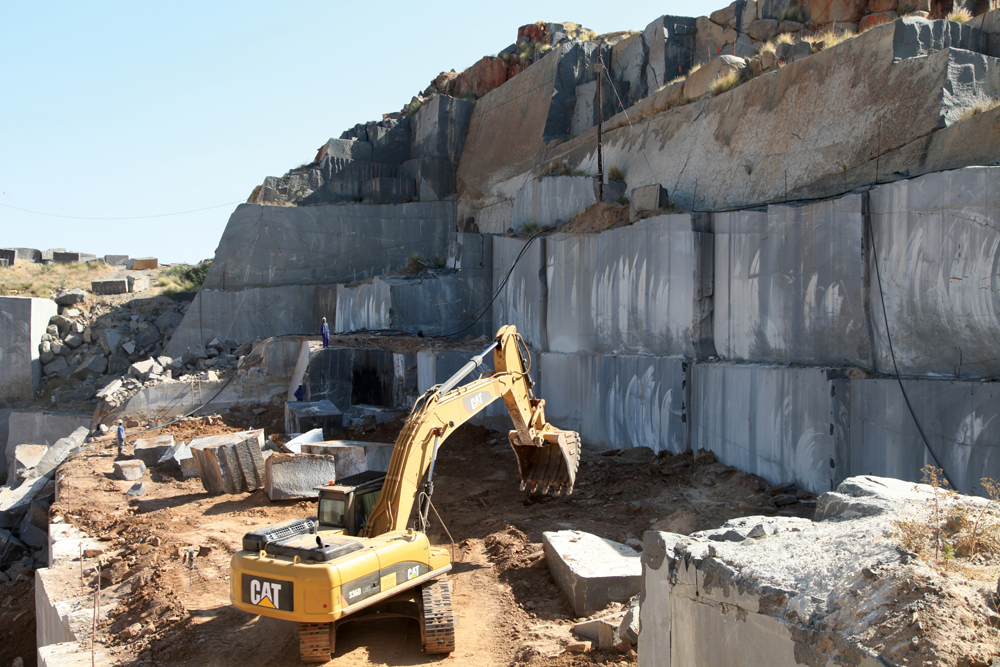Diving into of Granite Quarries in South Africa
Diving into of Granite Quarries in South Africa
Blog Article
Discovering the Rich History and Sustainable Practices of Granite Quarrying
As we base on the precipice of uncovering the intricate tapestry of granite quarrying, a journey through time exposes not simply the physical act of extracting rock yet additionally the cultural and historical importance woven into the very textile of this practice. From the ancient origins that laid the foundation for modern quarrying methods to the lasting techniques that are forming the future of this sector, each chisel mark on granite surface areas informs a tale waiting to be uncovered (granite quarries in south africa). The legacy of granite quarrying extends far past simple removal; it is a testament to human ingenuity, resilience, and the enduring appeal of this majestic rock
Old Beginnings of Granite Quarrying
Dating back to ancient civilizations, the practice of quarrying granite has been an essential component of human background and architectural innovation. The earliest evidence of granite quarrying go back to ancient Egypt, where huge pyramids and detailed sculptures were crafted from this long lasting rock. The Egyptians used primitive devices to remove granite blocks from quarries, showcasing the significance of this material in their monumental building and constructions.
Progressing in background, the Greeks likewise made significant contributions to the quarrying of granite. The Greeks made use of granite in various architectural wonders, such as holy places and sculptures, demonstrating their ability in shaping and carving this hardy rock. The Romans even more improved the strategies of quarrying granite, employing sophisticated devices like chisels and hammers to remove and form granite for their famous frameworks.
With the centuries, the technique of quarrying granite has progressed, with modern-day innovations improving performance while keeping the timeless allure of this natural rock - granite quarries in south africa. From ancient people to modern building contractors, the heritage of granite quarrying remains to shape our globe
Evolution of Quarrying Methods
The development of quarrying techniques has actually been marked by a continuous development towards greater effectiveness and precision in removing granite. From the basic methods used by our forefathers to the sophisticated innovations used in modern quarrying procedures, the sector has undertaken considerable improvements. Early quarrying techniques entailed manual work with basic tools such as blades, hammers, and wedges to extract granite blocks from the earth. As worlds advanced, methods like fire-setting and primitive explosives were introduced to help with the removal process.
Developments in computer-controlled devices and 3D modeling have enhanced quarrying operations, leading to marginal ecological influence and improved sustainability techniques. As the demand for granite proceeds to climb, the redirected here evolution of quarrying techniques remains essential to conference industry requires efficiently and sustainably.
Cultural Value of Granite
Granite holds a profound social importance throughout numerous worlds due to its long-lasting presence in architectural masterpieces and admired monuments. The cultural relevance of granite prolongs past its physical characteristics; it embodies resilience, security, and eternity, making it a symbol of sustaining traditions and customs.

Sustainable Practices in Quarrying
Among the rich background of granite quarrying and its social significance exists an expanding focus on sustainable methods within the industry. As environmental recognition and issues about source deficiency have increased internationally, the quarrying field has significantly embraced sustainable techniques to lessen its influence on the setting and surrounding communities.

Additionally, improvement and rehabilitation of quarry right here websites post-extraction are indispensable to sustainable practices. By bring back quarried locations to an all-natural or advantageous state, such as developing wildlife environments or leisure areas, quarriers can balance out the ecological footprint of their operations and contribute positively to the local ecosystem.
Tradition of Granite Quarrying
With a historical background steeped in craftsmanship and industrial progression, what sustaining effect has granite quarrying left on the landscape of contemporary culture? The heritage of granite quarrying goes beyond plain removal practices; it has actually formed architectural marvels, urban landscapes, and social heritage worldwide. The long lasting nature of granite has actually made it a recommended choice for monoliths, structures, and facilities, standing as a testimony to the skill and artistry of quarry employees throughout generations.
Moreover, the economic impact of granite quarrying can not be ignored. The market proceeds to give job opportunity and drive regional economic climates in areas where granite extraction is prevalent. It has additionally spurred technical improvements in quarrying techniques and devices, causing much more reliable and sustainable methods.
In regards to sustainability, the heritage of granite quarrying includes efforts to minimize environmental effects with recovery tasks and accountable resource management. By balancing economic passions with environmental stewardship, the industry strives to make sure that future generations can proceed to take advantage of this long-lasting all-natural resource.
Verdict

Report this page